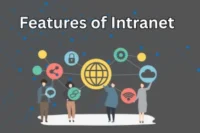Node.js for Backend : Complete Guide
Published: 11 Aug 2025
Node.js is a powerful, open-source, cross-platform JavaScript runtime built on Chrome’s V8 engine. It allows developers to run JavaScript outside the browser, making it perfect for backend development. Its event-driven and non-blocking I/O model enables it to handle thousands of concurrent connections efficiently. This makes it a top choice for Node.js backend development in APIs, real-time applications, streaming services, and scalable web solutions.
If you’re wondering whether Node.js for backend is the right path for your career, the answer is yes especially if you want a fast, unified tech stack where you can use JavaScript for both frontend and backend.
Getting Started with Node.js
Before you can dive into building a backend, you need to set up your environment.
Installation & Setup
Follow these simple steps to install and set up Node.js on your system before starting backend development.
- Download Node.js from nodejs.org (LTS recommended).
Verify installation:
bash
CopyEdit
node –version
npm –version
- Install a code editor like VS Code.
Your First Node.js Script
A simple “Hello World” HTTP server:
javascript
CopyEdit
const http = require(‘http’);
http.createServer((req, res) => {
res.write(‘Hello World’);
res.end();
}).listen(3000);
Run:
bash
CopyEdit
node server.js
Visit http://localhost:3000 and see your first Node.js server in action.
Core Concepts for Backend Development
When learning Node.js backend, you should understand its core features:
- Event Loop — Handles asynchronous operations without blocking the main thread.
- Core Modules like http, fs, path, and events are the foundation of most applications.
- npm (Node Package Manager) — Lets you install libraries such as Express.js for building powerful APIs.
Building Your First Backend — Step by Step
This section takes inspiration from practical guides like the Medium “Creating Your First Backend with Node.js” tutorial.
Step 1 — Project Setup
bash
CopyEdit
mkdir my-backend
cd my-backend
npm init -y
npm install express
Step 2 — Basic Express Server
javascript
CopyEdit
const express = require(‘express’);
const app = express();
app.get(‘/’, (req, res) => {
res.json({ message: ‘Welcome to Node.js Backend API’ });
});
app.listen(5000, () => console.log(‘Server running on port 5000’));
Step 3 — Folder Structure
perl
CopyEdit
my-backend/
│── server.js
│── routes/
│── controllers/
│── models/
Step 4 — Adding Routes
javascript
CopyEdit
app.get(‘/users’, (req, res) => {
res.json([{ id: 1, name: ‘John Doe’ }]);
});
This structure is scalable for larger projects.
Enhancing Your Node.js Backend
Once your backend is up and running, you can enhance it with added features, security measures, and best practices to make it more robust and reliable.
Security Best Practices
The following are some essential security practices to protect your Node.js backend from common threats and vulnerabilities.
- Use HTTP Basic Authentication or JWT for secure access.
- Store environment variables in .env.
- Validate user input to prevent attacks like SQL injection.
Connecting to a Database
Node.js works seamlessly with both SQL and NoSQL databases. For example, connecting to MongoDB:
javascript
CopyEdit
npm install mongoose
javascript
CopyEdit
const mongoose = require(‘mongoose’);
mongoose.connect(‘mongodb://localhost/mydb’)
.then(() => console.log(‘Database connected’));
Node.js Career & Learning Roadmap
According to the Node.js roadmap, here’s the path to becoming a pro backend developer:
- Basics: Learn JavaScript, core Node.js modules, and npm.
- Frameworks: Master Express.js or Nest.js.
- Databases: Work with MySQL, PostgreSQL, or MongoDB.
- Advanced Concepts: Learn clustering, streams, microservices, and testing.
- Deployment: Deploy using services like Heroku, AWS, or Docker.
For those looking to build a career in Node.js, mastering these skills will make you stand out in backend development jobs.
Conclusion
Using Node.js for backend gives developers a powerful, scalable, and fast foundation for modern applications. Whether you’re creating APIs, real-time apps, or enterprise-level platforms, Node.js offers unmatched flexibility.
If you’re just starting out, follow the Node.js roadmap, practice with real projects, and aim to master backend architecture. The demand for Node.js backend developers is only growing and this is your chance to get ahead.
FAQs
The following are some frequently asked questions about Node.js for backend development, along with clear and concise answers.
Node.js is used to build fast, scalable, and efficient backend applications, including APIs, real-time chat systems, streaming services, and microservices.
Yes, Node.js is excellent for backend development due to its event-driven, non-blocking I/O model, which allows it to handle multiple requests efficiently.
Yes. Since Node.js uses JavaScript, understanding core JavaScript concepts is essential before learning Node.js for backend development.
Node.js works well with both SQL databases like MySQL and PostgreSQL, and NoSQL databases like MongoDB. The choice depends on your project needs.
You can start by installing Node.js, setting up a project folder, initializing it with npm init, and using a framework like Express.js to handle routes and requests.
Yes, Node.js is widely used in large-scale applications by companies like Netflix, PayPal, and LinkedIn because it scales easily with high concurrency.
Node.js is the runtime environment for executing JavaScript on the server, while Express.js is a framework built on Node.js to simplify routing, middleware, and server logic.
While Node.js itself is for backend, you can use JavaScript for both frontend (in the browser) and backend (with Node.js) for a full-stack JavaScript environment.
You can secure it by using authentication (e.g., JWT), storing environment variables in .env files, validating user input, and applying HTTPS.
The roadmap includes learning JavaScript basics, Node.js core modules, frameworks like Express.js, databases, authentication, testing, and deployment strategies.

- Be Respectful
- Stay Relevant
- Stay Positive
- True Feedback
- Encourage Discussion
- Avoid Spamming
- No Fake News
- Don't Copy-Paste
- No Personal Attacks

- Be Respectful
- Stay Relevant
- Stay Positive
- True Feedback
- Encourage Discussion
- Avoid Spamming
- No Fake News
- Don't Copy-Paste
- No Personal Attacks





